Among Friends. 10 February 2021. Mimids.
By Walt Anderson
There is a striking contrast between a MIME, one who performs silently by using gestures and motions, and a MIMIC, one who parrots or apes (funny how we use animal terms!) words or phrases or behaviors of another. The bird family Mimidae is anything but silent, and its members go far beyond mere imitation. In fact, the mimids are some of the most vocally versatile of all bird songsters.
Arizona is blessed with great mimid diversity, with five breeding species of thrashers (plus Brown Thrasher as a vagrant), widespread Northern Mockingbirds (and casual visits by the tropical Blue Mockingbird), and a breeding population of the Gray Catbird in the White Mountains area. While mockingbirds do mimic other sounds, including those of other birds, most of the thrashers sing beautiful, varied songs of their own devising. I encourage you to google them by name to listen to their incredible arias. I recommend the nice species accounts in All About Birds, produced by the Cornell Laboratory of Ornithology.
Buenos Aires NWR has had all of these species except for the Catbird and the Le Conte’s Thrasher (and if Le Conte’s were to live here, you can bet that global warming has turned this place into a desolate desert).
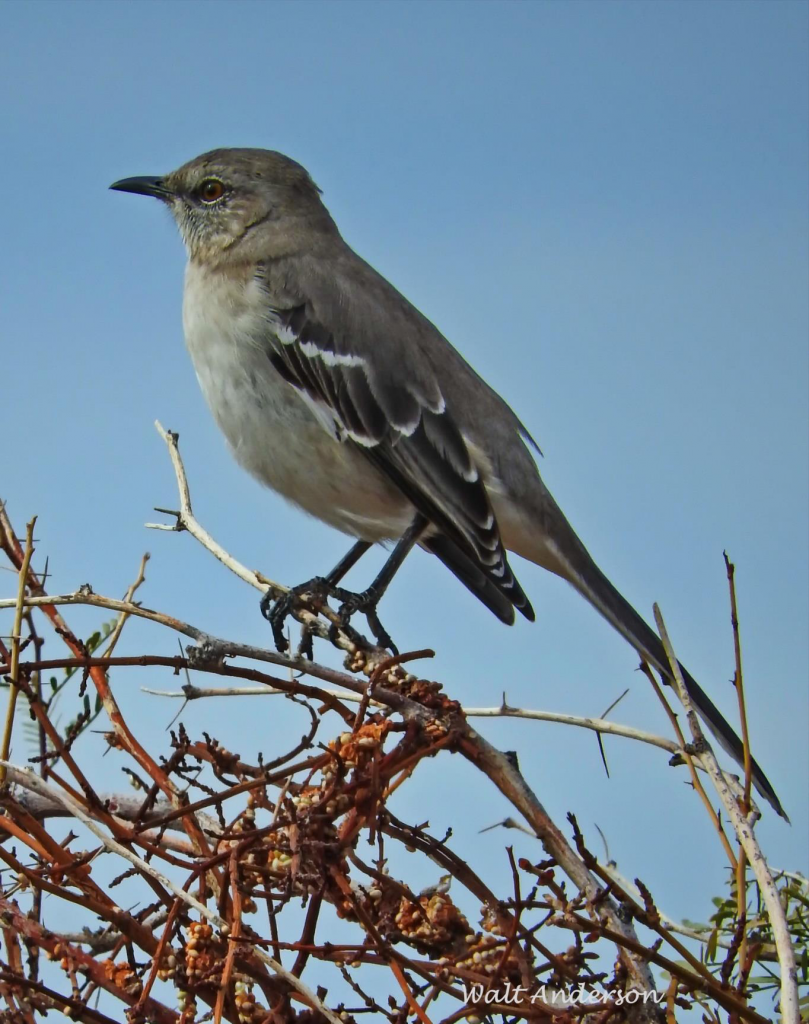
The most familiar of the mimids is the Northern Mockingbird (yes, there are other mockers to the south that sing more or less in Spanish or Portuguese). Though coloration may seem subtle, there is nothing subtle about the behavior of this bold bird, as they flash the white patches in their wings to scare up insects and perform flashy flight displays. They are aggressive toward other mockers and will attack just about anything that gets to close to their nests. Beware!
●●●
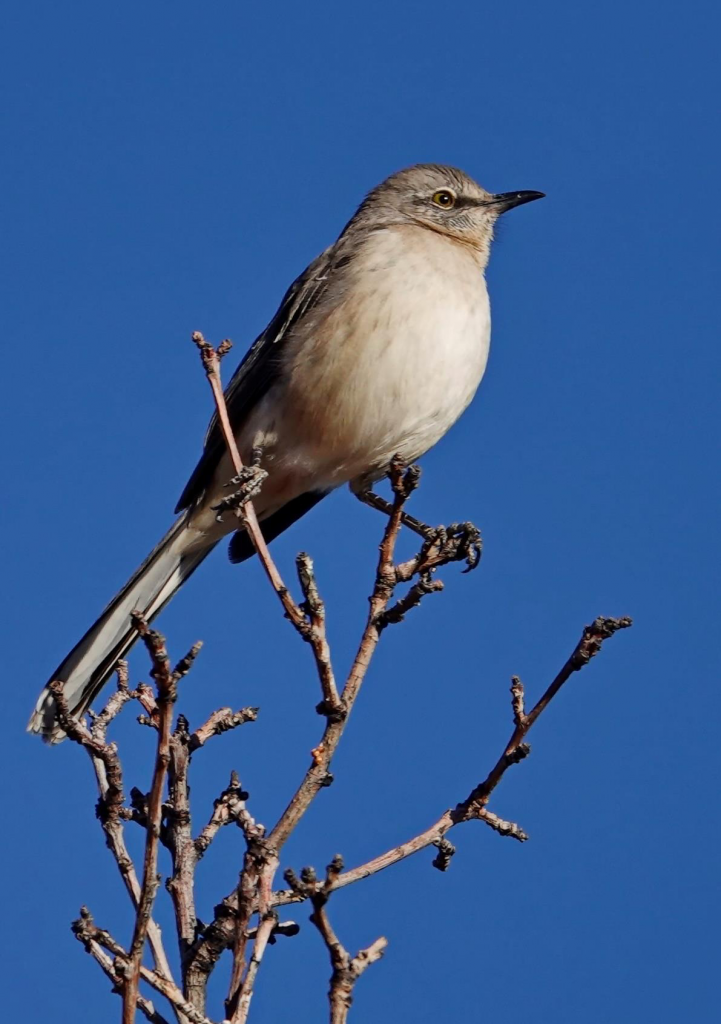
Mockingbirds of both sexes sing, and if there is a bright moon or streetlight, they might sing all night long (yes, this can be annoying, but it’s better than a cat fight!). They add to their vocal arsenal throughout their lives, mimicking other birds, frogs, or even human machines. Studies have shown that male mockers with the largest, most diverse repertoires tend to win the reproductive sweepstakes. Like most mimids, they tend to eat insects and other invertebrates in the summer, more fruits in the winter.
●●●
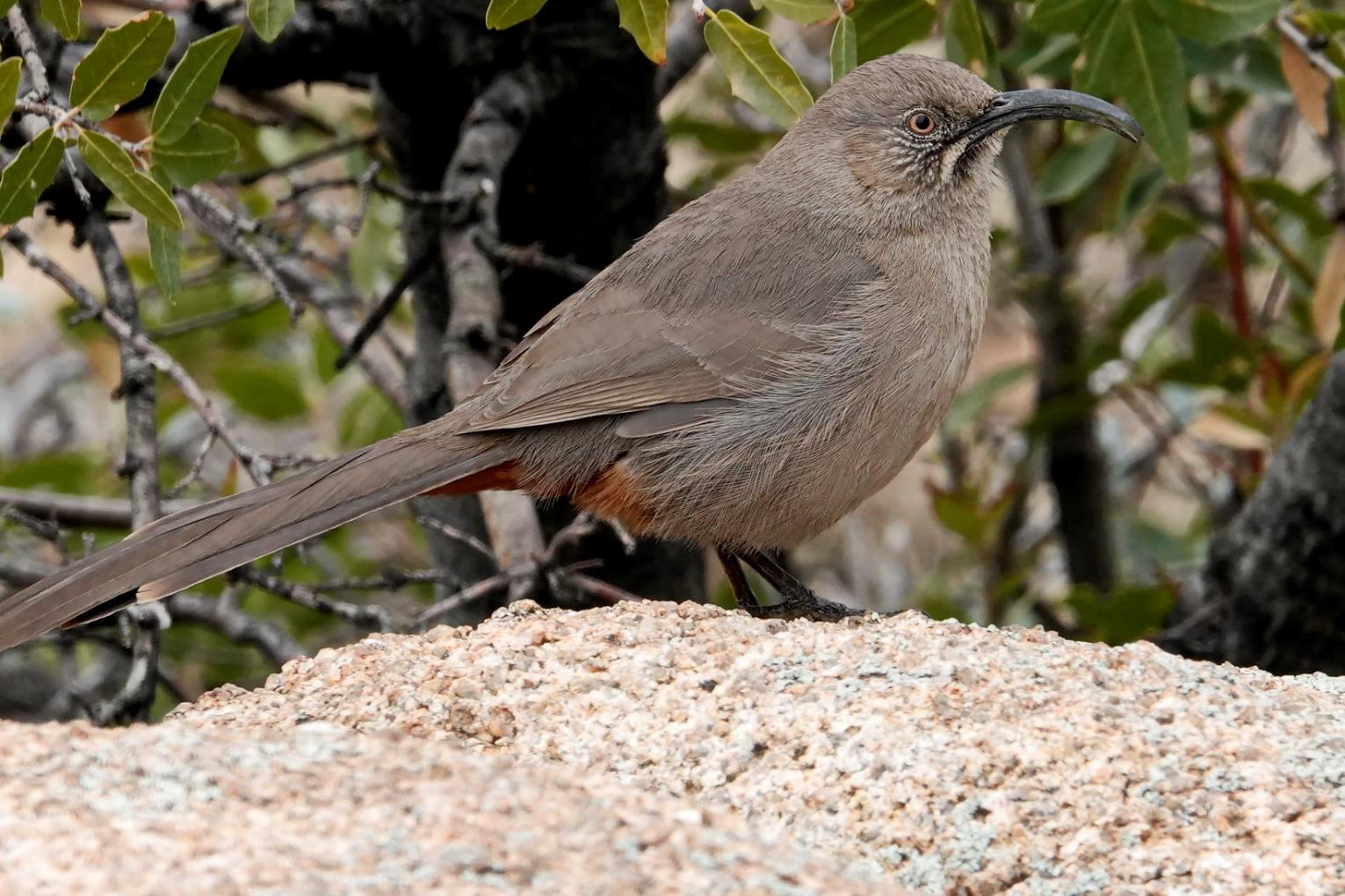
The Crissal Thrasher (named for its rusty undertail coverts, or crissum) is a shy bird of chaparral and brushy areas throughout Buenos Aires NWR. It starts singing in January and February, and the morning and evening choruses are incredibly lovely. Superficially, it could be mistaken for the Canyon Towhee, which also has a rusty crissum, but that long, curved beak and striking moustachial stripes give it away. Other birds give it a wide berth when they see that scimitar approaching. Thrashers get their name from the way some species use their impressive beaks to toss leaves and other ground debris aside as they search for food.
●●●
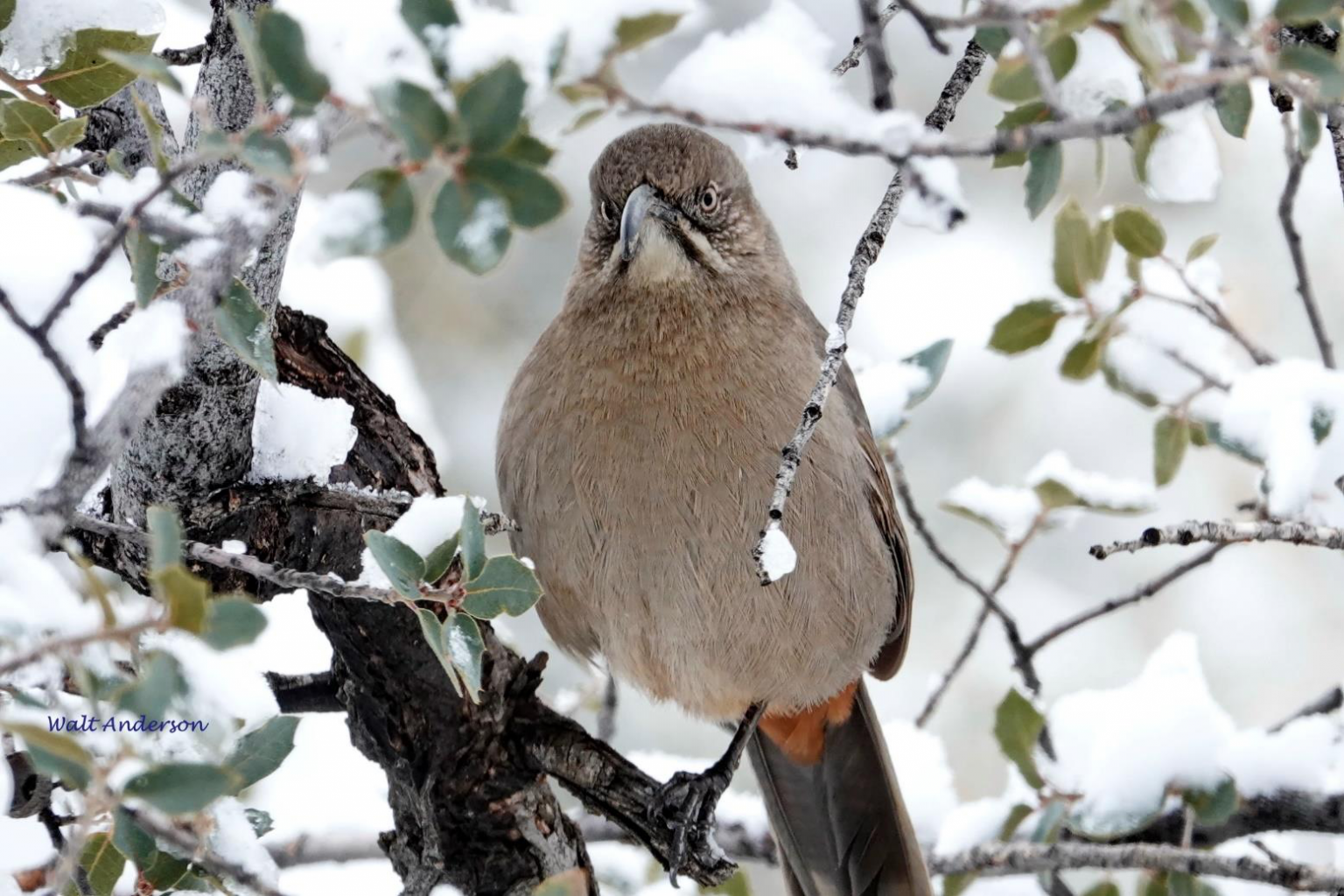
Because they use that long, curved forceps to procure food, Crissal Thrashers and their kin have good binocular vision. They have been found through much of Arizona from as low as 100-foot elevation in desert scrub and xeroriparian areas (with mesquite, tamarisk, saltbush) up to 6400 feet in central Arizona chaparral, but they generally avoid habitation and have lost considerable living space to urban and suburban development. Once they are nesting, they become even more secretive than usual. I consider myself very lucky to have a good portfolio of images of the reclusive bird.
●●●
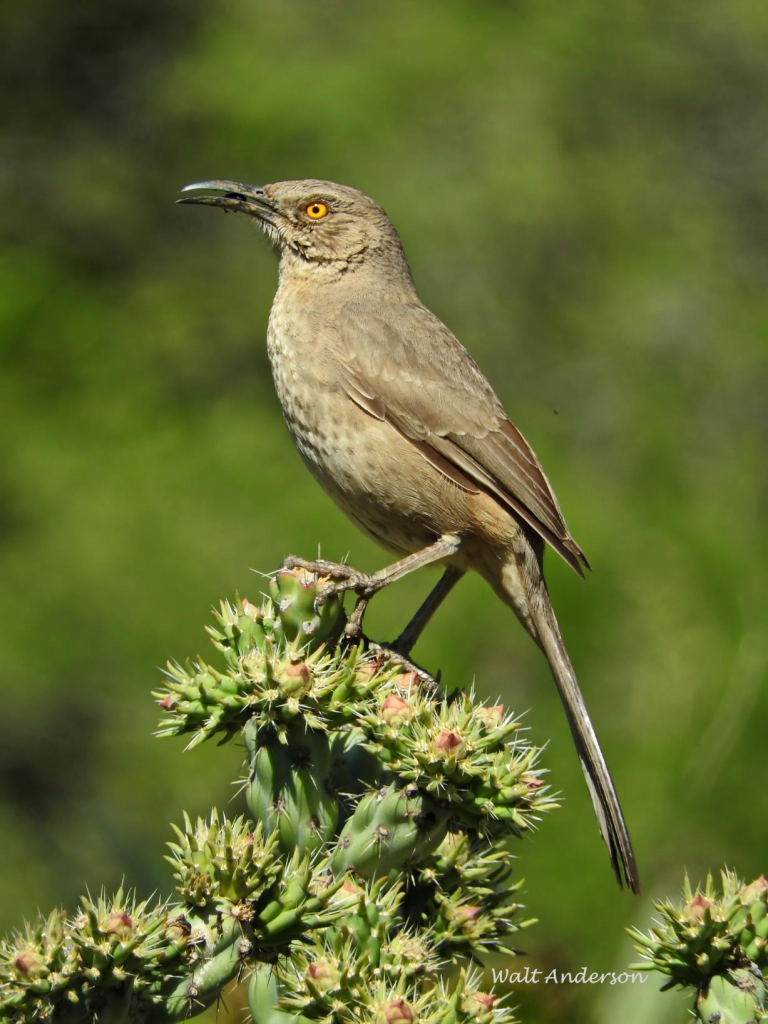
The avianality (personality doesn’t really fit) of the Curve-billed Thrasher is strikingly different from that of the Crissal. This species and the Cactus Wren (the Arizona State Bird) are quintessential desert birds, usually nesting in cholla or other cacti and being loud-mouthed (calling a loud wit-weet!) and cheeky so that you can’t miss them. The biologist who first described this species called it “curve-billed,” even though three other species yet to be discovered actually had much more impressive curves.
●●●
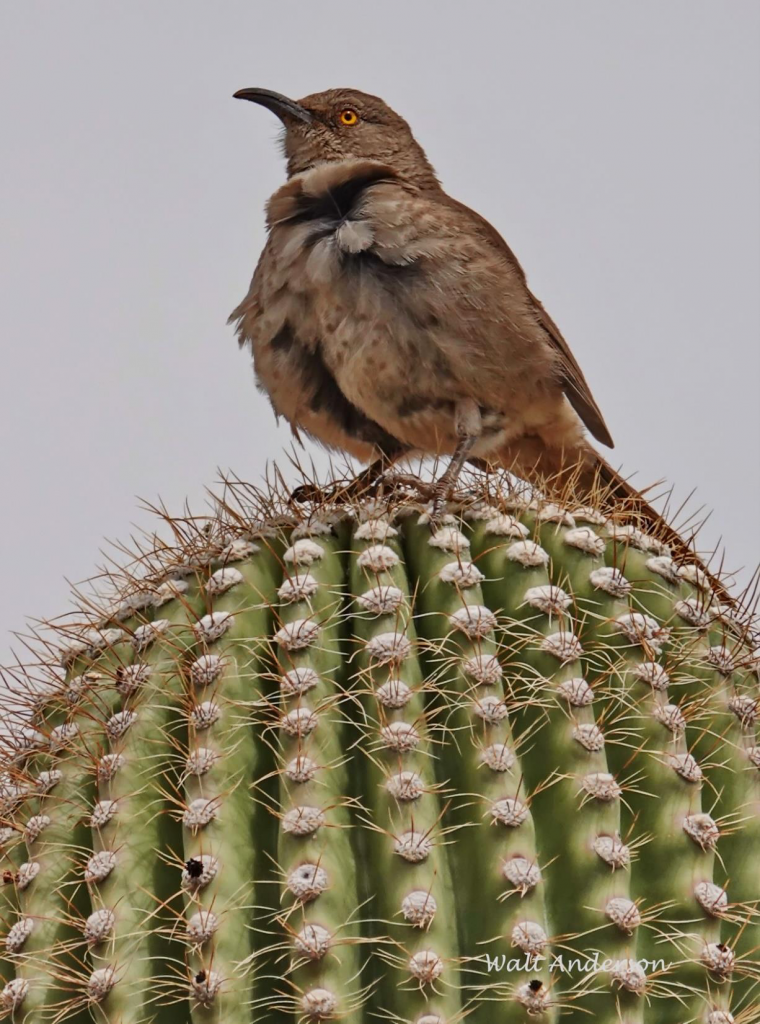
Obviously, this bold bird could not be accused of being spineless (how do they do this?). In my three decades in Arizona, I have seen their range expand out of the deserts up to the Prescott area, including the Granite Dells, though they are not common here yet. The world is changing around us! Because they can live in proximity to humans (especially if they have cactus gardens), this is a species that will hold its own even as humans push farther and farther into what was once natural.
●●●
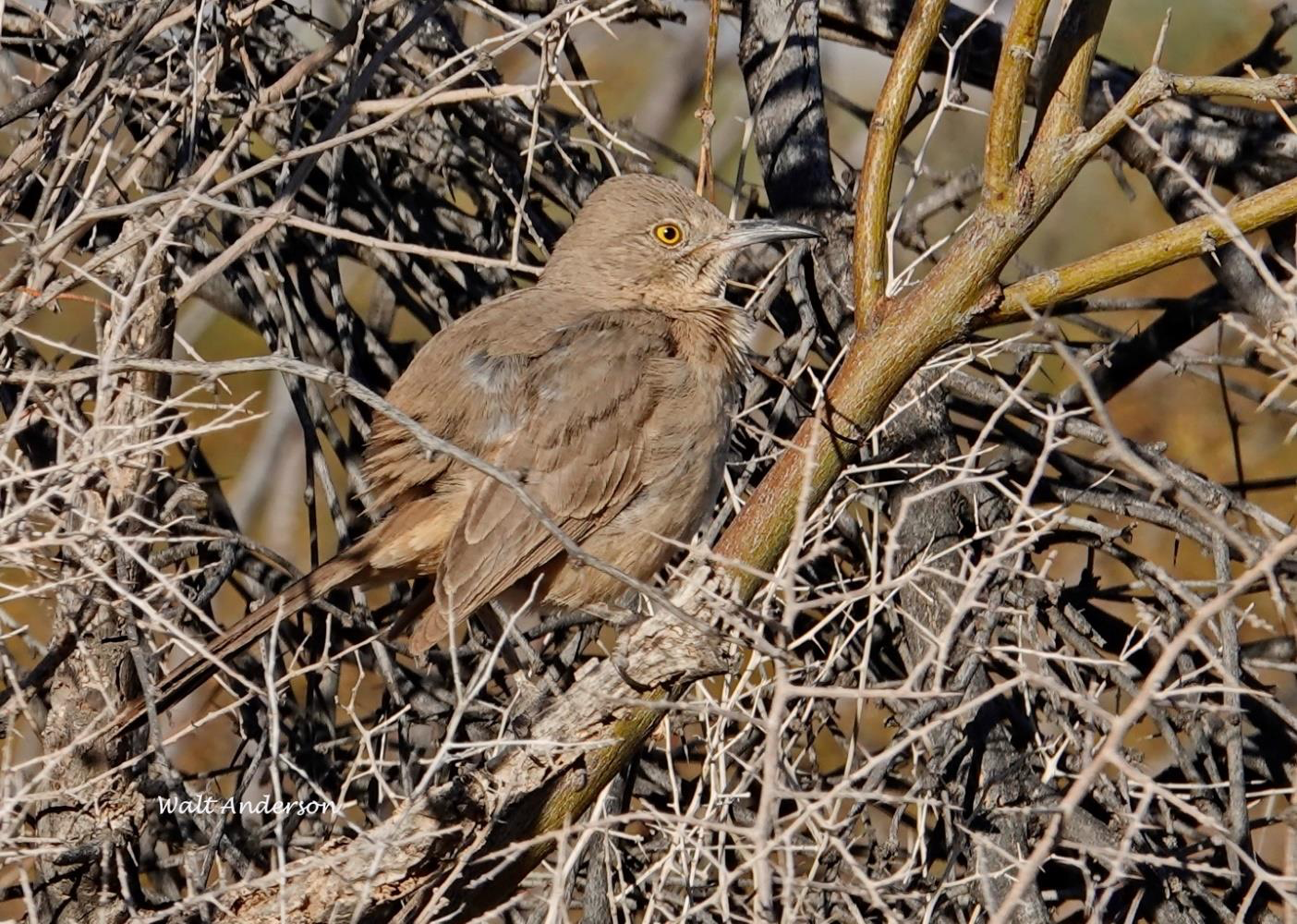
The Bendire’s Thrasher when first recorded was thought to be a small female Curve-billed when Major Bendire collected it in the Tucson area in 1872, but its voice and behavior are quite different. It is much shier than its larger cousin and has a less-curved bill that is pale at the base. It has a broad distribution in Arizona, though it is not common in most areas and is not often recorded at BANWR. Those in northern Arizona are migratory, while those in the south are year-round residents.
●●●
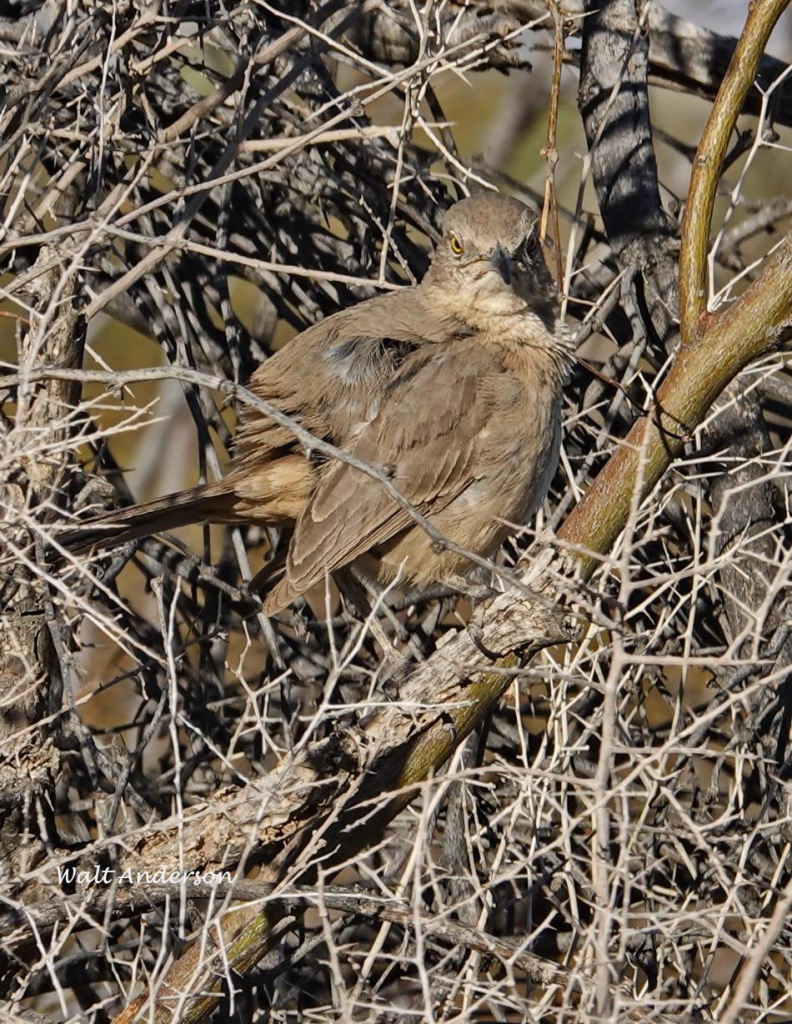
The Bendire’s Thrasher sings a lovely song from an elevated perch, but it forages mostly on the ground, often running with tail raised if disturbed. Disturbing from my point of view is its 86% population decline between 1968 and 2015. Some experts predict that at this rate, it will lose another half of its population by 2035. Loss of species like this is akin to losing another avian culture, and we shall all be poorer for it. Biologists at least are monitoring populations and encouraging programs to help birds in danger, but it is up to all of us to do what we can to protect the habitats and lifestyles of our native birds.
●●●
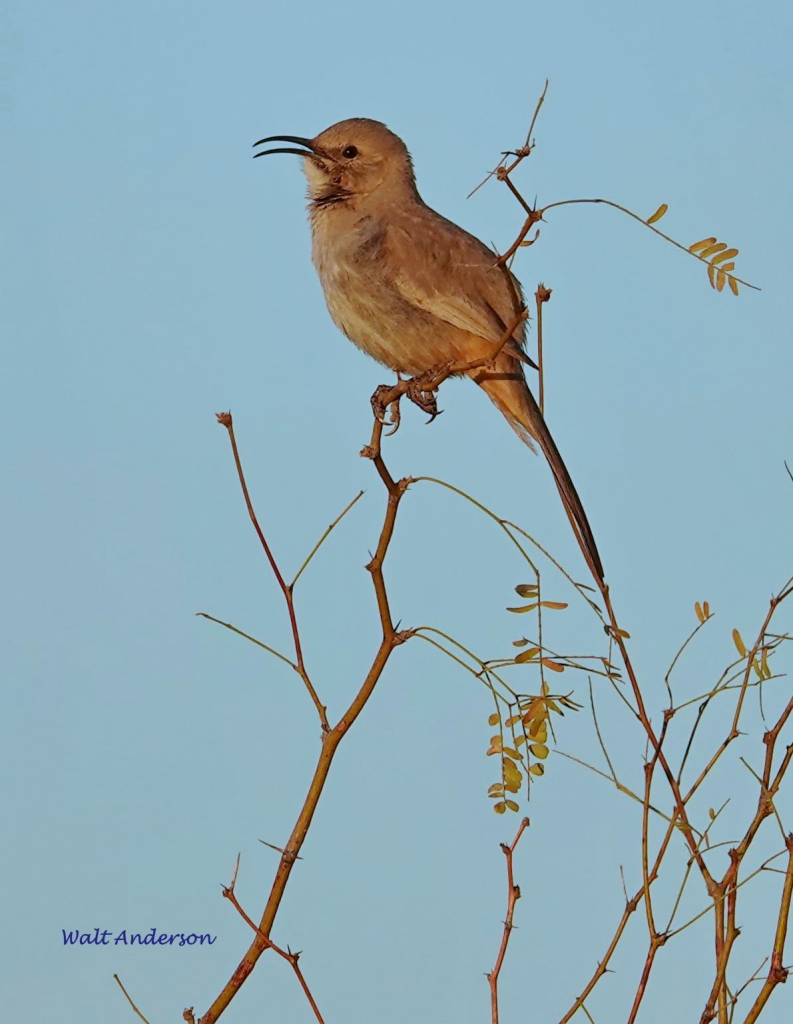
The Le Conte’s Thrasher inhabits the most desolate, arid, hot, and inhospitable portions of the Sonoran Desert. Recently I visited “The Thrasher Spot” near the Gila River in south-central Arizona and saw my first Le Conte’s (this very bird) and listened to its gorgeous song. I also watched it racing along the ground with its dark tail elevated; this bird could give a roadrunner a run for its money! The Thrasher Spot is typical of so much of the desert SW, with human damage and refuse ubiquitous. Sofas, other furniture, and broken appliances, not to mention regular plastic bags of garbage, are strewn wherever vehicles can easily pull of the highway. This area is not only home to about four species of thrasher; it clearly is a gathering spot for the evil Mattress Trasher.
●●●
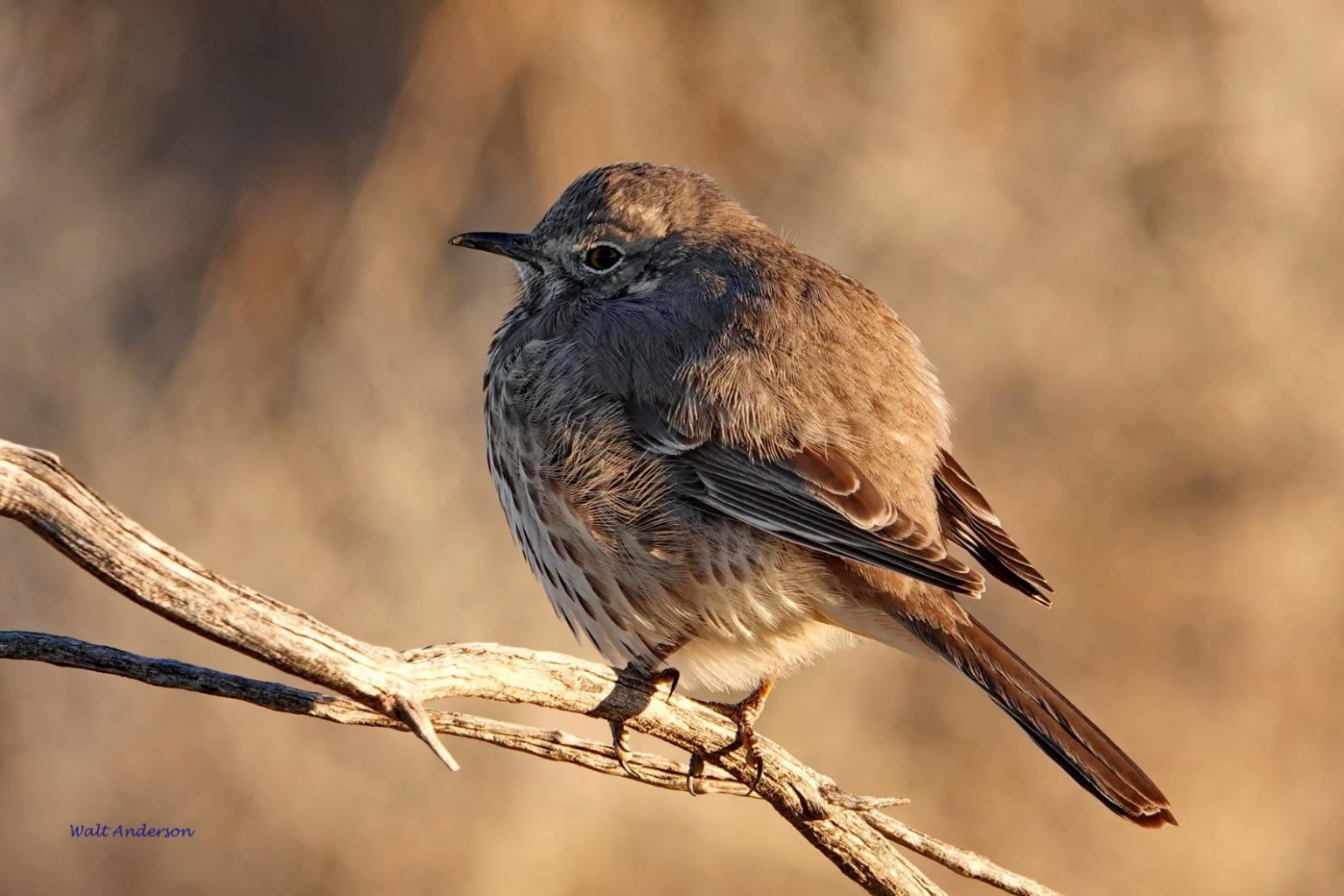
Smallest of the thrashers is the Sage Thrasher, which might sound like the wisest of the clan but is actually named for its preferred sagebrush habitat in the intermountain West. It too is an accomplished songster, sometimes singing in acrobatic flights and landing with a bilateral wing display, apparently attractive to potential mates and a warning to competitors.
●●●

The Sage Thrasher could easily be mistaken for a thrush, though its habitat choices and behavior help to distinguish it. They winter in Arizona in pinyon-juniper woodlands and some desert and grassland environments. In the P-J, they may form flocks as they feed on good crops of juniper seeds. There are many threats to sagebrush habitats, and their populations declined by half from 1966 to 2014.
I would be hard-pressed to choose a favorite among this family of virtuosos. Let it suffice that the one I love best is the one I am with at the moment. And because so many of these birds are declining in numbers, I hope that my voice and photos can help raise some awareness of these special birds that leads to protective action. If you have read this far, tell your friends to become mimid-fans, and get out there to hear them!
